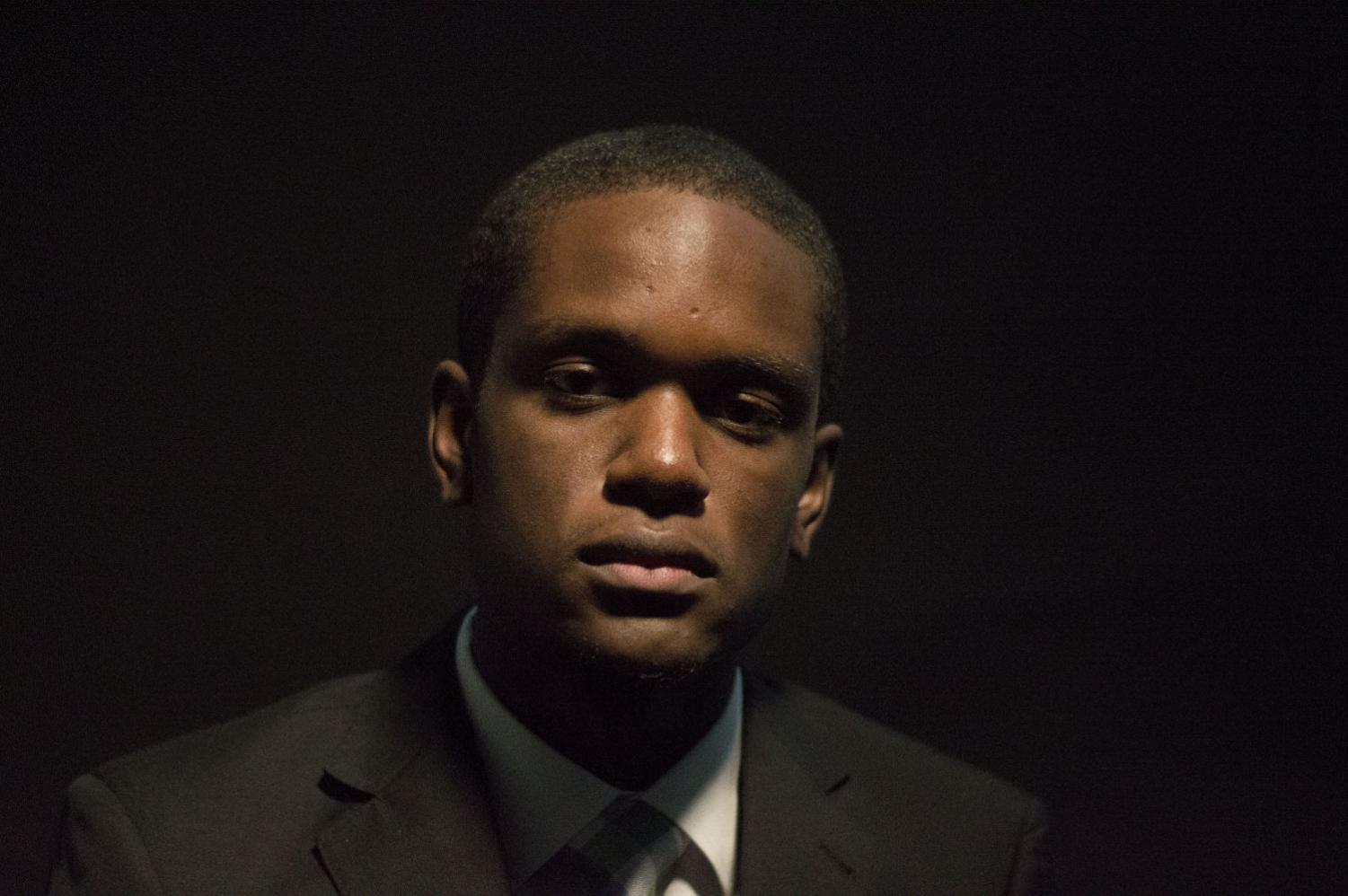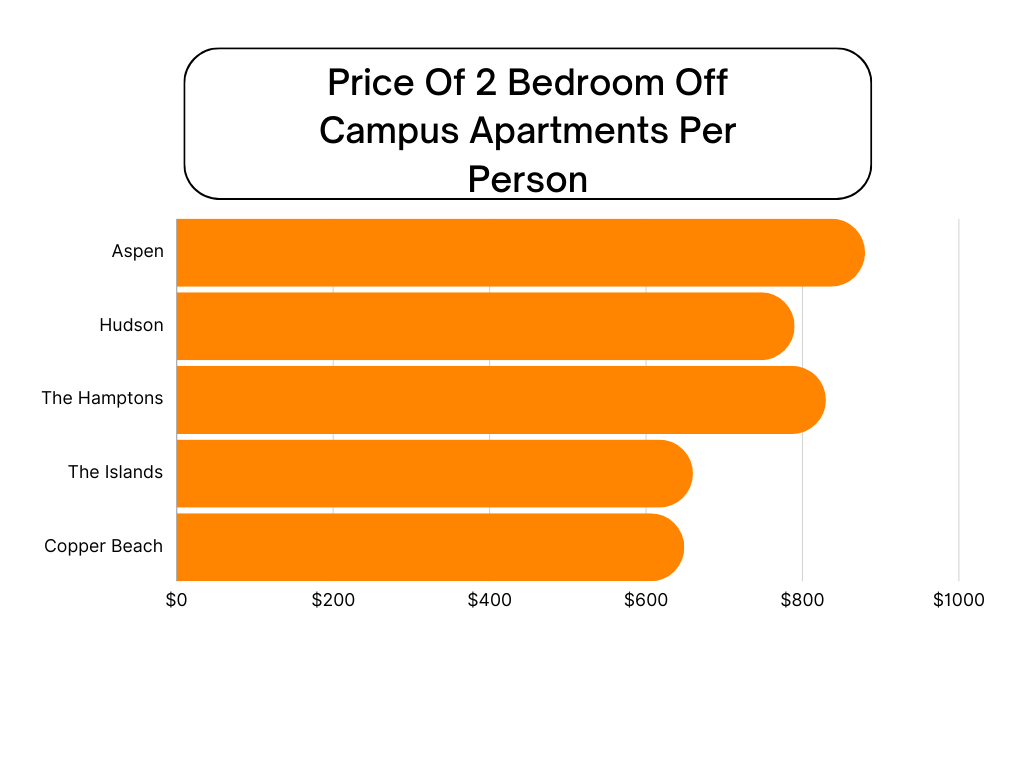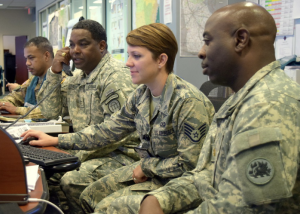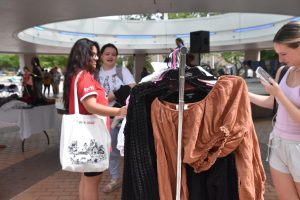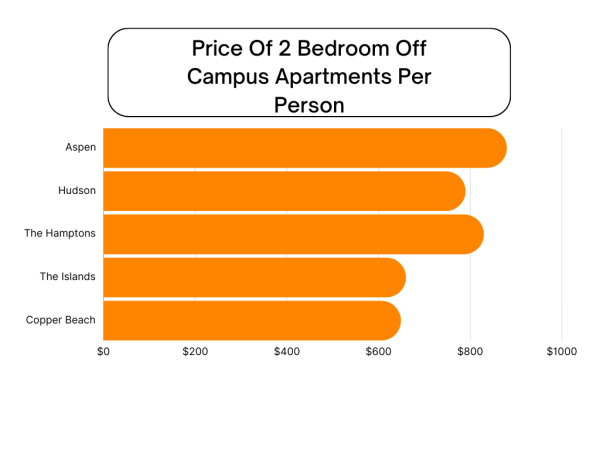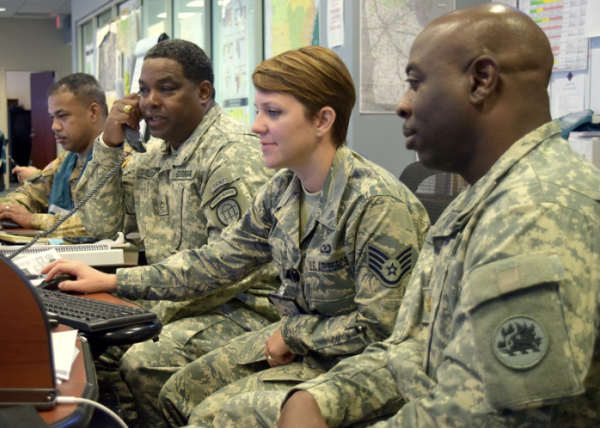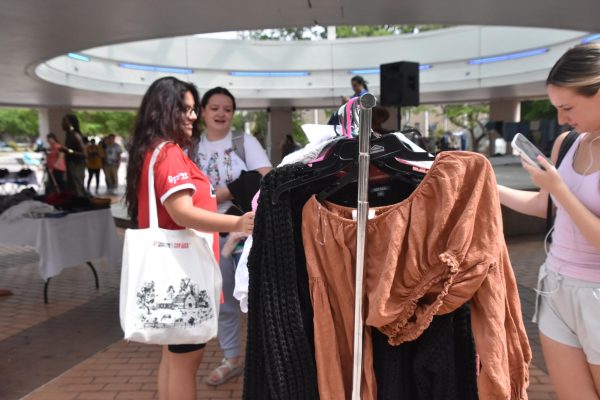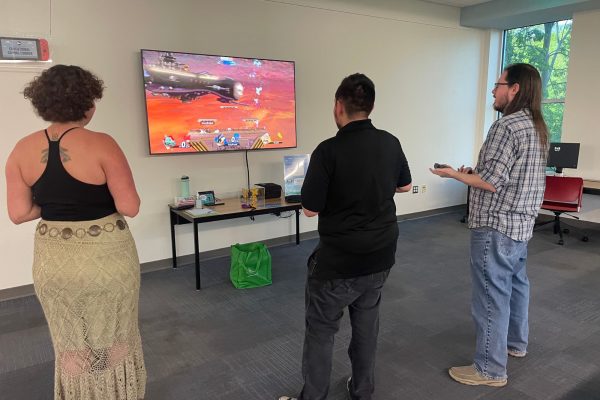Black Stories Matter Part 1: Jamar Boyd reflects on Charleston Shooting
September 17, 2015
Jamar Boyd stands before a group of teenage vacation bible schoolers. For tonight’s lesson, he has chosen The Parable of the Good Samaritan, an anecdote used by Jesus to explain what one must do to inherit eternal life.
Boyd sets the scene for his group. A man is beaten and robbed while traveling the path from Jerusalem to Jericho. The priest passes the beaten man by. The Levite passes the beaten man by. But the Samaritan – the one who was most different from the beaten man – was the one who helped him up.
“God commands to us to go and do likewise,” Boyd said, “That was the last story of the week. My main goal was to break down the stereotypes we develop as young people. Just because he looks like this, or he looks like that, that doesn’t mean you know him”.
For the youth attending Emanuel African Methodist Episcopal Church’s vacation bible school, Boyd’s message came just one month after the murder of nine members of their congregation, including their pastor.
Jamar thought it was an important lesson, given the circumstances.
“I felt like I did something. It wasn’t a pride thing, but more of a thank you to them. I told them, ‘Thank you so much for giving me the opportunity to be here with them, even as a total stranger.’ It just tells you a lot about the people of Mother Emanuel,” Boyd said.
_____________________
Boyd is a senior Sports Management major at Georgia Southern. He was in Charleston this summer for an internship with the College of Charleston’s athletic department, where he worked in ticketing and marketing at the College of Charleston Arena.
Boyd’s daily commute led him right past Emanuel AME Church, or as it is commonly known, Mother Emanuel.
“When I was walking up Calhoun Street, I noticed it. Very old edifice, white, statuesque building. The next day I walked by again and thought, ‘I have to go here.’ My grandmother and grandfather are involved in the AME faith and I thought, ‘Why not?’”
On the day of the massacre, June 17, Boyd woke up and wished his grandmother a happy birthday, got ready for work and made his walk towards the arena. He planned on attending bible study with his aunt at Mount Moriah Baptist Church in North Charleston later that night, but he decided to stay home and stream the service instead. Bishop Neil C. Ellis was delivering a holy convocation that night, and Boyd didn’t want to miss it.
“Around 9:30, while I was listening to the service and posting some things on Twitter, an individual I was following retweeted that a shooting had occurred in downtown Charleston, near Meeting Street,” Boyd said.
Another tweet followed. It said the shooting happened at Mother Emanuel. Boyd was taken aback.
“Even now I get teary-eyed. I thought to myself, ‘The church that I walk past on my way to work? The church I was planning on visiting? A shooting?’” Boyd said.
Boyd kept the live stream of Bishop Ellis’s service open, even as more information about the shooting was released. When Ellis finished his convocation, the church’s pastor told the members of the congregation that a shooting had occurred at Mother Emanuel.
“A lady in the congregation cried out – I have never heard a cry like that in my life. A few cries followed. Bishop Ellis asked if anyone in the crowd was a member of the Mother Emanuel congregation, and about 5 or 6 individuals stood up,” Boyd said.
Boyd turned on the news and kept a Twitter stream open as the details began to scroll past his eyes. Nine people had been killed. The names of the victims had not yet been released, aside from Reverend Senator Clementa Pinckney. Boyd stayed up until 2 a.m., scrolling through Twitter, looking for more information through teary eyes.
“All I could do was pray and cry. In the African-American community, church is inclusive. It’s one place where it doesn’t matter who you are, what you look like, what you have or what you don’t have, you can come in, and you’re going to feel welcome,” Boyd said, “For that young man, Dylann Roof, to come into bible study and sit with them for an hour and then open fire, it was just unimaginable.”
_____________________
The next morning, Boyd awoke to a sea of new information. The victims were named. Cynthia Hurd, Susie Jackson, Tywanza Sanders, Reverend Senator Clementa Pinckney, Myra Thomson, Reverend Depayne Middleton-Doctor, Sharonda Coleman-Singleton, Ethel Lance and Reverend Daniel Simmons all lost their lives at the hands of Dylann Roof. Boyd saw the Confederate flag on Roof’s jacket and heard the words of his manifesto, which confirmed the massacre was racially motivated.
“The morning after, the picture came on Twitter of who this terrorist was. When the security footage was released and I saw the confederate flag on the front of his vehicle, I wasn’t shocked. I wasn’t the least bit shocked that those things were on his car, his jacket, his manifest,” Boyd said.
Boyd walked to a street corner adjacent to Mother Emanuel take in the scene. A barricade was placed around the entrance to the church. People had started to place memorials and flowers around the outside of the church, and the news crews began to line the sidewalks of Meeting and Calhoun Street, trying to work their way closer to the church.
Friday morning, Dylann Roof’s bond hearing was held. The families of the nine victims spoke at the hearing, and expressed forgiveness towards Roof.
“Not one of them said anything hateful. Not one of them wished anything negative upon him. Every single one of them forgave Dylann Roof. They pleaded for God to have mercy on his soul. I’ll be honest – I’m a christian, I’m a minister, and I love God almighty, but I don’t know if I could forgive somebody that quickly. I believe that changed everything.”
In the following days, Boyd attended prayer vigils across the city. The first was in downtown Charleston. Another was held by the College of Charleston. The streets were lined with crowds of mourners, both black people and white people, praying, singing and crying.
“You see hundreds and hundreds of people gathering together in prayer and song, and in that moment, whatever sadness and anger I had pent up inside of me was released. We’re not a people who are going to retaliate violently, we’re going to react with prayer,” Boyd said.
Boyd was able to attend five of the nine funerals. The first was Cynthia Hurd, then the double funeral of Susie Jackson and Tywanza Sanders, then Reverend Payne Middleton-Doctor, then Myra Thomson.
_____________________
Boyd was driven to become involved with Mother Emanuel.
“I made it my mission. Every Wednesday night, I was going to go to bible study at Mother Emanuel, and every Sunday I was going to go to service at Mother Emanuel. It wasn’t about being seen. I wanted to figure out how in the world this congregation would get through this,” Boyd said.
The next Wednesday night, Boyd went to bible study. There were about 30 people in attendance that night, but every week it grew. Boyd was impressed by the faith and poise of the people of Mother Emanuel.
“The bible study was held in the place where those people were killed, so you could see the marks of where bullets had hit the walls. There is one wooden post on the top, and you can see right where the bullet brushed it,” Boyd said.
One night, Mother Emanuel announced that they were looking for volunteer teachers for their upcoming vacation bible school program. Boyd was already working at the college, plus another job to have spending money, but he felt that God had placed this opportunity in front of him for a reason.
“I said, ‘Lord, you keep knocking on the door, telling me to do this.’ I would go to the college, then I’d go to the other job, and then go to help with VBS after,” Boyd said.
He volunteered to teach one lesson for the teenage group on the last night of the program. Boyd didn’t expect there to be a large turnout, but by the third day of the week over 30 children were in attendance. The children were positive and upbeat, but very aware of what happened only a few weeks prior.
The theme of Mother Emanuel’s VBS was bullying. A different lesson pertaining to the topic was taught every night, and served as a way to facilitate an open dialogue about bullying between the students, volunteers and teachers. Boyd taught his Good Samaritan message the final night, in an attempt to show the true meaning of “love thy neighbor,” something he learned from the congregation of Mother Emanuel.
“It really was a humbling experience. They showed me, this is how you go through this. You don’t have to hate people.This was a racially-driven, hate-driven crime. They may hate you, but you can love them until Jesus comes,” Boyd said
As Boyd walked outside after the last night of VBS, he looked at the memorials outside the church, now covered in flowers and cards and letters. He looked up at the towering edifice, and thinks of the love and forgiveness shown by the families of the nine victims.
Boyd said,
“If you just love, there is room. We have a lot of issues in our society, especially in the south, that we don’t like to talk about, the main issue being race relations. We’ve tried to ignore it for years and years on end. But even with these tragedies, you can’t let hate cloud your judgement. You can’t let hate cloud your thinking, nor your heart. If you operate out of hate, you’re going to neglect the very people who you’re trying to help.”
Starting the converation
Jamar Boyd was named Second Vice President of Georgia Southern’s NAACP chapter in May of 2015, only a few weeks before he left for Charleston. The experience reinvigorated his drive to be more involved in the chapter, and address the issues that caused the shooting.
“The goal, in my opinion, is to get rid of the mindset that these things don’t exist. We often see it, and we don’t actually look into it or pay attention to it,” Boyd said.
Boyd says that the first step to addressing racial disparity on campus is to acknowledge it. At Georgia Southern, a common way to address the issue is through conversation-based presentations and public forums that attempt to open up a dialogue between white and black students.
The perception of race relations by Americans is largely negative, according to a CBS News/New York Times poll released in July. The poll found that 57 percent of Americans think race relations in the United States are generally bad, and 38 percent of those polled think race relations in the United States are actually getting worse.
John Nwosu, a Diversity Education Graduate Assistant for GSU’s Multicultural Student Center, currently works in the MSC’s Diversity Peer Educator program. DPEs are specially trained students that arrange diversity presentations for students. The goal of these presentations is to promote conversation about various topics, including stereotyping, race, ethnicity, culture, religion, sexual orientation and socioeconomic status. Nwosu is received his undergraduate degree from GSU, and recognizes the need for such programs.
“We don’t have conversations about what it’s like to actually be a black student here. There’s not a SOAR session about that. There was shock when I was walking down the pedestrium, and people don’t even acknowledge you. For me, I have to ask myself: ‘Is it because I’m black?’” Nwosu said.
The goal of the DPE program and conversational forums from other organizations is to encourage cultural understanding between students of different backgrounds and ideologies. Some events have a political focus; some center around sexual orientation and some are dedicated solely to about race relations. Students that attend these conversation-based events are given the chance to speak in front of a crowd, as well as respond to other students about the issues discussed.
“I can’t say that I relate with every white person. I have white friends. Does that mean I relate to them on everything? No, but conversation helps me understand where they’re coming from and what they mean,” Boyd said.
As President of the Student Government Association, Charles Glover wants to encourage a positive change in race relations at GSU, but he is skeptical of the impact of conversation-based events. He says the problem with these events is the lack of new faces in the audience.
“I don’t know how to do it aside from hosting another event that people can or can’t show up to. If I had my way, there’d be a required course on being culturally competent. Everyone should have to go through something like that, because you’ll always interact with someone who is different than you,” Glover said.
Glover suggests students step out of their comfort zone, to go beyond attending the conversation-based events.
“Go out and do something you don’t usually do. Go out and go to an event put on by a group you don’t normally associate with. If you’re a white person, go to an NAACP meeting. If you’re straight, go to an LBGT event. Try to understand the problems instead of ignoring them,” Glover said.
Boyd, Glover and Nwosu all offered the similar advice to students who want to help ease the racial tension both on campus and off. They advise students to rethink their boundaries, and to surround themselves with people of other cultures and ideologies.
Boyd said,
“We can’t say, ‘That’s just your opinion.’ If someone is saying that something is happening, that’s what they believe is going on. Perspective is reality. Until you work to change your perspective, you will not see the reality of others.”

